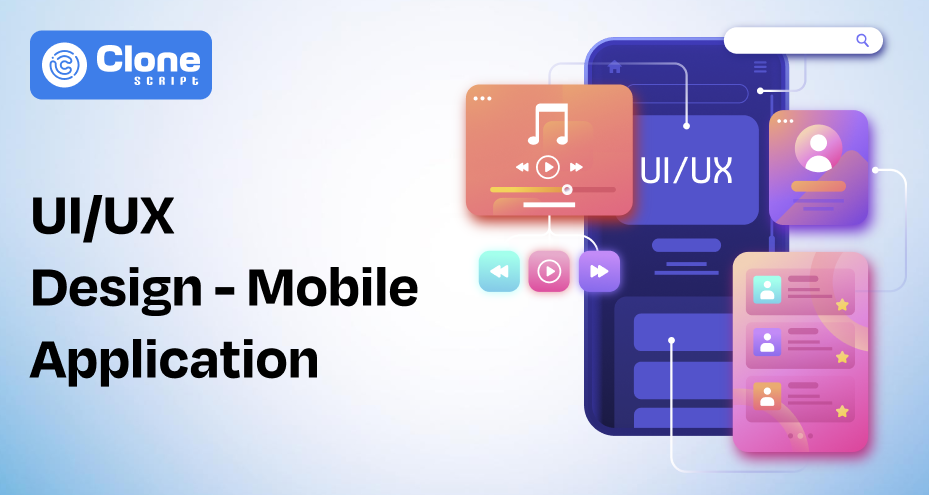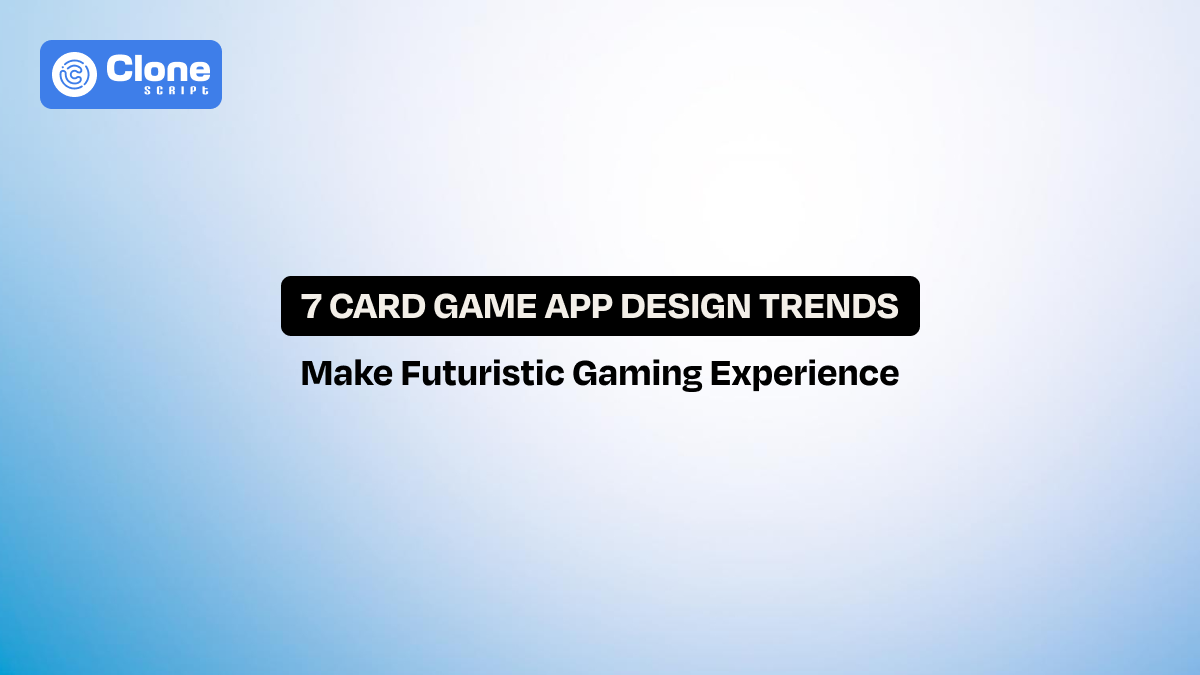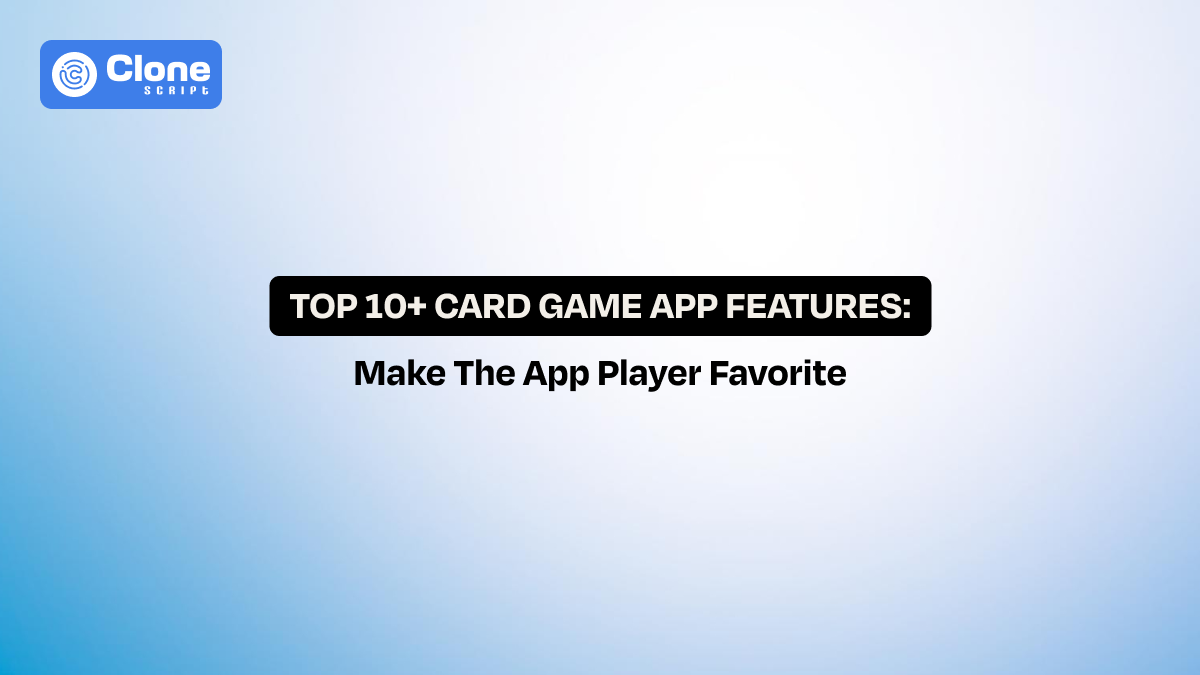The Future of Card Game App Design: 7 Key Trends You Can’t Ignore
Card games have always been popular, but today they are reaching new audiences through mobile apps. Players no longer sit around a table with a deck of cards. Instead, they play Poker, Rummy, or Solitaire on their phones for hours every week. This shift has created a strong business opportunity for companies that want to enter the market.
However, success in this space depends on more than just adding a set of digital cards to an app. The real difference comes from design. The card app UI game design kits—how the interface looks, how easy it is to play, and how engaging the overall experience feels—decide whether people stay or uninstall the app.
This blog explores the future of card game app design and highlights seven important trends that businesses should know before planning their next project.
Why Design Matters in Card Game Apps?
Design is not only about how a card game looks. But it defines how players experience the game from the first tap. This means that the quality of design directly shapes engagement, retention, and revenue.
1. First Impressions Decide Retention.
When players open a card game app, their first impression forms within seconds. A mobile game UI that is clear, simple, and visually balanced encourages players to continue.
The worst case?
If menus are confusing, buttons are hard to tap, or the visuals look outdated, users often uninstall immediately.
Studies in mobile gaming show that poor onboarding and unclear navigation are among the top reasons for high uninstall rates.
2. Building Trust in Casino Games.
For apps with real-money elements, such as casino game design, trust is essential. Players want to feel safe when depositing money or competing in multiplayer environments. A professional, well-structured UI design signals fairness and reliability. Small details—like smooth animations, clear payment screens, and consistent color use—help create confidence.
3. Design as a Growth Driver.
Good design not only reduces frustration but also encourages repeat play. With engaging visuals, smooth interactions, and thoughtful card game app user engagement strategies, businesses see higher retention rates and stronger monetization. In short, design is beyond the task—it is a key element of long-term success.
What is the Future of Card Game App Design?
The future of card game design is shaped by changing player expectations and fast-moving technology. Businesses entering this market need to see design not as an afterthought but as the foundation for growth. The next generation of card game apps will go far beyond digital versions of Poker or Rummy. They will combine personalization, immersive visuals, and smart features to keep users engaged.
1. Personalization and Adaptive Play
Players now expect games to adjust to their style. In the coming years, card game app design trends will focus on adaptive difficulty levels, personalized recommendations, and customizable themes. Whether it’s choosing a card deck style or setting game difficulty, personalization will drive loyalty.
2. Combine Tradition with Technology
Classic card games are timeless, but future apps will use AI, AR, and cross-platform play to bring new experiences. For example, AI-powered dealers in Poker or AR overlays that project cards onto a real table can make the game more engaging.
3. Responsible and Transparent Design
For a casino game, fairness and trust will remain essential. Future apps will highlight transparent odds, spending controls, and clear user guidance to support responsible play.
In short, the future of mobile card game design is about combining tradition with innovation, creating apps that feel personal, safe, and interactive for every type of player.
Top 7 Card Game App Design Trends You Can’t Ignore
When making a successful card game mobile app for today’s audience, the design trends have to be your prime weapon to win their trust.
1. Hyper-Realistic Interfaces with Casino Aesthetics Keep Engagement Rate High.
Don’t think that players today want only digital cards on their mobile screen. They’re in search to feel the real excitement of the casino. This is why card game UI design is moving toward hyper-realistic visuals. Details like polished table surfaces, animated chips, and lifelike card flips recreate the feeling of sitting at a casino table.
This trend matters because realism builds trust and engagement.
-
Players are more likely to stay longer when the game feels authentic.
-
Visual feedback, such as glowing highlights on selected cards or sound effects when chips move, adds to immersion.
-
Even small elements, like background music or tactile vibrations when dealing cards, can make the difference between a basic game and a premium experience.
The takeaway: investing in a realistic casino app design helps differentiate your app and attract serious players, especially in markets where competition is high.
2. Personalized Player Journeys: Feels Motivated Experience.
Every player has unique preferences, and personalization is becoming a standard in card game app UI/UX design trends. Instead of offering the same interface to everyone, apps now adapt based on user behavior and choice.
This can include customizable card backs, adjustable table layouts, or even AI-driven difficulty levels that match player skills. For example, a beginner may receive helpful hints or slower gameplay, while advanced users face tougher opponents. The goal is to make each user feel that the app was built for them.
Businesses can benefit from personalization because it increases loyalty.
-
Players who feel recognized are more likely to keep playing and spend on upgrades.
-
Adding seasonal themes or holiday-inspired card skins also gives users fresh reasons to return.
But know that personalization should not be an afterthought—it should be part of the core app design strategy.
3. Social and Multiplayer Integration Encourage Community.
Card games have always been social, and digital platforms are now enhancing that experience. Apps with strong social and multiplayer integration outperform single-player-only versions because they add competition and community.
Modern card games app features include like live chat, leaderboards, and team-based play. Players can invite friends to private tables, compete in global tournaments, or share achievements on social media. These elements encourage repeat play because people return not just for the game itself, but also for the relationships and challenges within it.
But what advantage does this trend offer?
-
Social features reduce marketing costs by encouraging organic growth. A player inviting five friends creates natural expansion.
-
Plus, in-app purchases—like buying special avatars or exclusive tournament entries are more exciting when players are part of a community.
In short, social play is not just a trend—it’s becoming a requirement in the future of mobile card game design.
4. Gamification Beyond Gameplay: Maintain the Competitiveness.
Gamification is no longer limited to winning hands or reaching high scores. Today, card game apps use layered reward systems that keep players engaged outside of regular play.
Examples include daily login bonuses, streak rewards for consecutive wins, and achievement badges for milestones like “100 games played.” VIP systems with tiered rewards are especially popular in casino game design, where players earn points to unlock exclusive benefits.
-
For users, these features add motivation and a sense of progress.
-
For businesses, they increase retention rates and create new monetization opportunities.
This results in players being more likely to purchase upgrades or currency when rewards feel within reach.
In short, gamification is one of the best UI/UX practices for card game apps because it extends the life of the game. Instead of playing one quick match and leaving, users stay engaged with challenges, goals, and rewards that give them long-term motivation.
5. AI-Driven Opponents and Smart Dealers Sounds Advance Platform.
Artificial intelligence is transforming the way card games are played. Instead of static, predictable bots, modern apps use AI-driven opponents that adapt to player strategies. This creates a more challenging and engaging experience for solo players.
AI is also being used to power realistic dealers in Poker or Blackjack. Animated dealers with natural gestures and smart responses make the game feel closer to a live casino experience. Beyond entertainment, AI helps maintain fairness by monitoring player behavior, detecting patterns of cheating, and ensuring balanced gameplay.
For card game developers, AI offers two advantages:
-
It keeps single-player modes engaging and enhances trust in multiplayer environments.
-
Users know they are facing smart, fair opponents instead of rigged systems.
As part of the future of mobile card game design, AI is the key to creating realistic, trustworthy, and enjoyable experiences across card game apps.
6. Cross-Platform and Multi-Device Experience Bring More Users.
Players want the flexibility to switch between devices without losing progress. A session started on a smartphone should continue seamlessly on a tablet, laptop, or even a VR headset. This expectation is driving demand for cross-platform card game app design.
-
Cloud sync is essential for this feature. It allows players to log in with their accounts and instantly pick up where they left off.
-
Multi-device optimization also ensures that screens of different sizes, from compact phones to widescreen monitors, deliver the same smooth experience.
Developers who adopt cross-platform design reach a wider audience and offer convenience that users value. For example, a player might practice on their phone during the day and then join a full game on desktop at night.
This approach not only increases engagement but also positions the app as future-ready. In competitive markets, multi-device access can be the deciding factor for users choosing between apps.
7. Ethical and Responsible Design Helps in Development.
As card game apps grow, especially in the casino game space, businesses face rising scrutiny over fairness and user safety. Players need to trust that games are not only fun but also responsible.
-
Responsible design includes clear separation between free play and real-money play, spending limits, and reminders for users who play for extended hours.
-
Transparent odds and fair play certifications also help build credibility.
Getting ethical card game design isn’t just about compliance with regulations—it’s a smart way to build a loyal audience. Players are more likely to stay with a platform that values their well-being.
In the coming years, ethical design will be more than a trend. It will be a requirement for building sustainable success in game design. Apps that ignore this risk lose trust and face legal challenges.
How a Professional UI/UX Design Service Can Help?
Businesses often underestimate the complexity of card game app design trends. A DIY approach may save costs, but risks delivering a subpar product that fails to engage users. Partnering with a professional UI/UX design service ensures your card game app development is built for long-term success.
Here are the benefits:
-
Expertise in Game Psychology – Professionals understand what keeps players engaged, from user engagement strategies to game design principles. This keeps the app more interesting.
-
UI/UX Best Practices – Skilled designers know how to apply the best UI/UX practices for card game apps. They manage seamless interaction, accessibility, and retention.
-
Tech-Driven Innovation – Experts bring innovative card game app features, from AI-driven personalization to AR-powered enhancements. This will lead more appropriate solution.
-
Time and Cost Efficiency – Instead of spending months fixing usability issues post-launch, professionals streamline the process upfront.
-
Scalability and Future-Proofing – Good design makes your app adaptable to new UI/UX design trends and evolving user expectations.
This is where AllClone Script’s UI/UX design service makes a real difference. We provide the best service to meet your needs.
-
User-Focused Design
We specialize in card game app design with player behavior in mind. Our team studies how users interact with apps and builds interfaces that are easy to navigate, visually appealing, and optimized for longer play sessions.
-
Ready-to-Use App Screens
With the AllClone Script, developers can receive 10 expertly designed mobile app screens, covering essentials like home, game lobby, gameplay, and player profiles. These ready-to-use templates save weeks of design time and ensure a consistent look across devices.
-
Mobile Casino Card Game UI
For businesses exploring the help of casino game design, AllCloneScript focuses on secure, engaging, and trustworthy interfaces. That can improve in-app purchases, deposits, and overall user engagement.
-
Faster Development, Higher Conversions
By providing polished UI/UX foundations, AllClone Script helps businesses reduce development costs and speed up launch timelines. Well-structured designs also support higher retention and conversion, leading to stronger long-term growth.
If your goal is to stand out in the future of mobile card game design, AllClone Script’s app UI/UX design expertise is the partner you need.

Conclusion
The success of a card game app depends largely on its design, prepared with the future in mind. From clear interfaces and engaging gameplay to personalized experiences and responsive layouts, every detail affects player retention and revenue.
Businesses entering this market need more than ideas—they need professional UI/UX expertise. AllClone Script provides ready-made, high-quality mobile app screens, player-focused interfaces that help launch apps faster, increase engagement, and boost conversions.
FAQs
-
What are the key features of a successful card game app?
A successful card game app combines intuitive UI/UX design, engaging gameplay mechanics, responsive mobile interfaces, and social multiplayer features to enhance user retention and satisfaction.
-
How can professional UI/UX design improve my card game app?
Professional UI/UX design offers user-friendly navigation, aesthetically pleasing interfaces, and seamless interactions, leading to higher user engagement and retention rates in your app.
-
What is the importance of responsive design in card game apps?
Responsive design guarantees that your card game app functions smoothly across various devices and screen sizes. It provides a consistent and enjoyable user experience for all players.
-
How does AllCloneScript's UI/UX design service benefit my project?
AllClone Script offers tailored UI/UX design services, delivering 10 high-quality mobile app screens that align with your game's theme and mechanics. It accelerates development and enhances user experience.
-
What are the latest trends in card game app design?
Current trends in card app design include immersive graphics, AI-driven gameplay, social integration, personalized user experiences, and cross-platform compatibility. These are all aimed at increasing user engagement and satisfaction.
-
How can I monetize my card game app effectively?
Effective monetization strategies include in-app purchases, subscription models, ad integrations, and offering premium features. This manages a steady revenue stream while maintaining user satisfaction.
-
How can I ensure my card game app stands out in the market?
Differentiation comes from unique gameplay mechanics, high-quality design, responsive interfaces, and effective marketing strategies. These can be improved through professional UI/UX design services.
-
What platforms should I target for my card game app?
Targeting both iOS and Android platforms expands your user base. While considering cross-platform development makes a consistent experience across devices, it maximizes reach and engagement.
-
What is the cost of a card game app development like Poker and Rummy?
The cost of a card game app like Poker or Rummy ranges from $15,000 to $100,000+, depending on features, platform, multiplayer support, UI/UX design, and real-money integration.
 BTC - Bitcoin
BTC - Bitcoin
 USDTERC20 - USDT ERC20
USDTERC20 - USDT ERC20
 ETH - Ethereum
ETH - Ethereum
 BNB - Binance
BNB - Binance
 BCH - Bitcoin Cash
BCH - Bitcoin Cash
 DOGE - Dogecoin
DOGE - Dogecoin
 TRX - TRON
TRX - TRON
 USDTTRC20 - USD TRC20
USDTTRC20 - USD TRC20
 LTC - LiteCoin
LTC - LiteCoin







